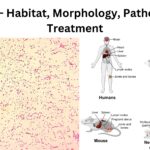Neuroscience 40 Views 1 Answers
Sourav PanLv 9September 24, 2024
Glutamate activates a number of different metabotropic receptors. The consequence of activating one subtype is the inhibition of cAMP formation. A consequence of activating a second subtype is activation of PKC. Propose mechanisms for these different effects.
Glutamate activates a number of different metabotropic receptors. The consequence of activating one subtype is the inhibition of cAMP formation. A consequence of activating a second subtype is activation of PKC. Propose mechanisms for these different effects.
Please login to save the post
Please login to submit an answer.
Sourav PanLv 9May 15, 2025
The different effects of activating various metabotropic glutamate receptors (mGluRs) can be attributed to the distinct signaling pathways they engage. Here’s a proposed mechanism for each of the effects mentioned:
1. Inhibition of cAMP Formation
Mechanism:
- Receptor Type: This effect is typically associated with mGluR2 and mGluR4, which are coupled to inhibitory G-proteins (Gi/o).
- G-Protein Activation: When glutamate binds to these mGluRs, it activates the associated Gi/o protein.
- Inhibition of Adenylyl Cyclase: The activated Gi/o protein inhibits the enzyme adenylyl cyclase, which is responsible for converting ATP to cyclic AMP (cAMP).
- Decrease in cAMP Levels: As a result, the levels of cAMP in the cytosol decrease. Since cAMP is a second messenger that activates protein kinase A (PKA), its reduction leads to decreased PKA activity, which can affect various downstream signaling pathways, including those involved in neuronal excitability and neurotransmitter release.
2. Activation of Protein Kinase C (PKC)
Mechanism:
- Receptor Type: This effect is typically associated with mGluR1 and mGluR5, which are coupled to Gq/11 proteins.
- G-Protein Activation: When glutamate binds to these mGluRs, it activates the Gq/11 protein.
- Activation of Phospholipase C (PLC): The activated Gq/11 protein stimulates phospholipase C, which catalyzes the breakdown of phosphatidylinositol 4,5-bisphosphate (PIP2) into inositol trisphosphate (IP3) and diacylglycerol (DAG).
- Role of IP3: IP3 leads to the release of calcium ions (Ca²⁺) from the endoplasmic reticulum, increasing intracellular calcium levels.
- Role of DAG: DAG remains in the membrane and, together with the elevated Ca²⁺ levels, activates protein kinase C (PKC).
- PKC Activation: PKC then phosphorylates various target proteins, leading to changes in cellular functions such as modulation of ion channels, alterations in gene expression, and changes in synaptic plasticity.
0
0 likes
- Share on Facebook
- Share on Twitter
- Share on LinkedIn
0 found this helpful out of 0 votes
Helpful: 0%
Helpful: 0%
Was this page helpful?




